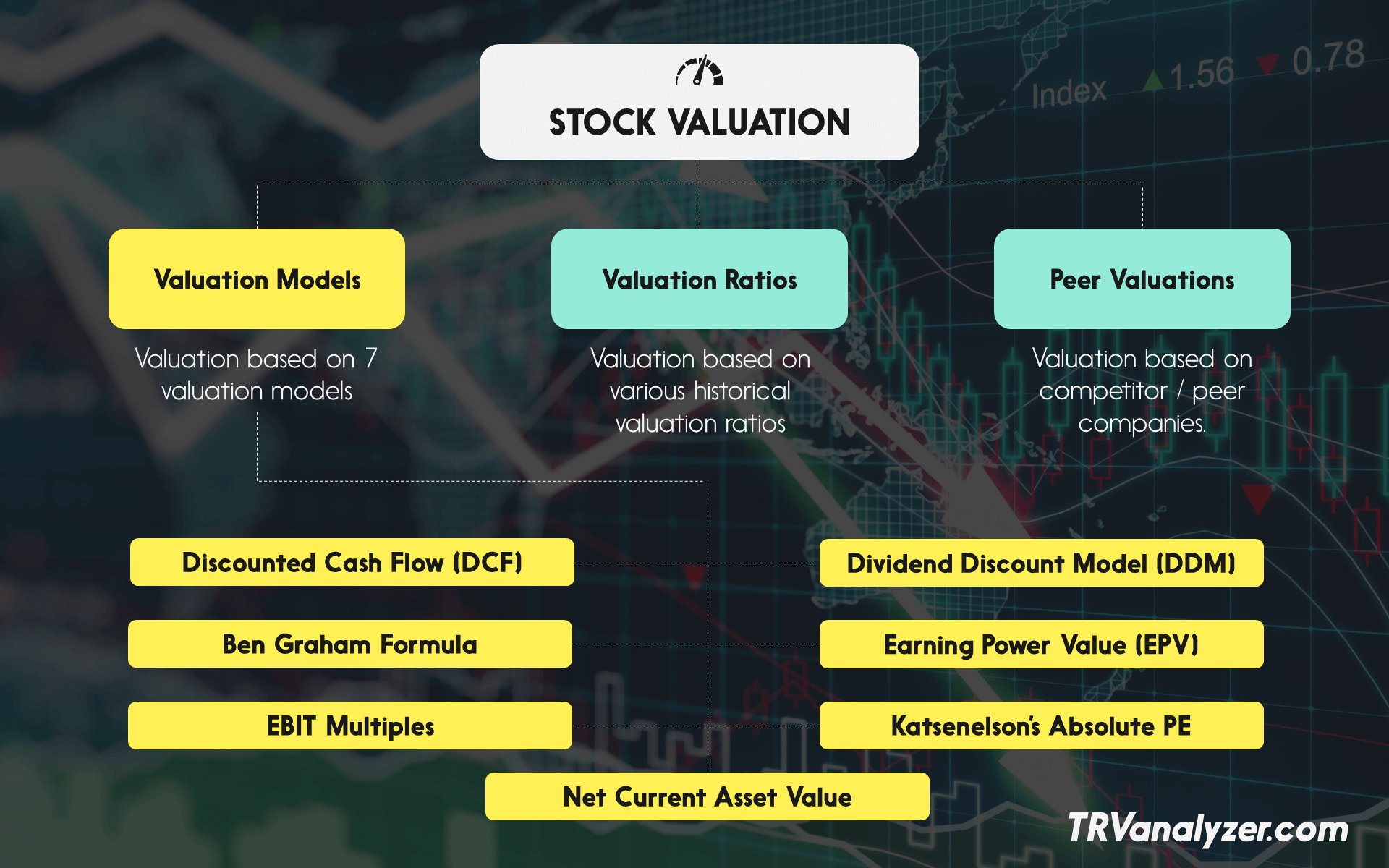You may have found a great company that you feel has outstanding potential but always end up getting stuck at what price you should purchase the company. Finding the value of a stock is a critical part of investing successfully. Valuing stocks is not hard, but it does require logic and practice.
However, when trying to figure out which valuation method to use to value a stock for the first time, most investors will quickly discover the overwhelming number of valuation techniques available to them today. There are the simple-to-use ones, such as the relative method, and there are the more absolute valuation models, such as the discounted cash flow model. Which one should you use?
Unfortunately, there is no one method that is best suited for every situation. Each stock is different, and each industry sector has unique properties that may require varying valuation approaches.
Two Categories of Valuation Models
Valuation methods typically fall into two main categories:
- Absolute valuation
- Relative valuation
Absolute valuation
Absolute valuation models attempt to find the intrinsic or “true” value of an investment based only on fundamentals. Looking at fundamentals simply mean you would only focus on such things as dividends, cash flow and growth rate for a single company, and not worry about any other companies. Valuation models that fall into this category include the dividend discount model, discounted cash flow model, earning power value, asset-based models and others.
Absolute valuation is highlighted in yellow in the picture above.
Relative valuation
In contrast to absolute valuation models, relative valuation generally involves calculating multiples or ratios, such as the price-to-earnings multiple, price-to-revenue, dividend yield and comparing them. These ratios can be compared to the company historical figures and also be compared to the peers’ company.
For instance, if the P/E of the firm you are trying to value is lower than the P/E multiple of a comparable firm, that company may be said to be relatively undervalued. Generally, this type of valuation is a lot easier and quicker to do than the absolute valuation methods, which is why many investors and analysts start their analysis with this method.
Relative valuation is highlighted in light blue in the picture above.
Science and Art of Stock Valuation
Before we move on to a few long winded articles on valuation method. Let’s us begin with two most important concept on how to value stocks.
Key Concept #1: Stock valuation is an art.
Give 5 people a paintbrush and they will paint different things.
The paintbrush is a tool and the quantitative side.
The strokes, the colors and final image is the qualitative side of stock valuation.
When you try to value stocks, it comes down to interpreting the numbers on hand, thinking forward and coming up with a narrative of what the company is trying to achieve.
Put those together and you have just valued a stock. For those who enjoy formula, this one sums up stock valuation.
Stock Valuation = Past and Current Numbers + Future Narrative
Key Concept #2: Stock Valuation is a range, not an absolute.
It’s important to understand that the final stock value will vary based on your assumption of scenarios.
Instead of trying to pinpoint one number, the art and science behind the concept of determining how to value stocks is to come up with a range of values.
Come up with a narrative for the possible downside of the company.
Come up with the narrative of the possible upside of the company.
Perform your valuation calculations and you have a lower and upper range to work with. The fair value will lie inside that range somewhere.
Keep these two key points in mind as we move on to stock valuation.
The Bottom Line
No one valuation method is perfect for every situation, but by knowing the characteristics of the company, you can select a valuation method that best suits the situation. In addition, investors are not limited to just using one method. Often, investors will perform several valuations to create a range of possible values or average all of the valuations into one. With TRV Stock Analyzer, all the valuation method is calculated for you automatically along with the average valuation for all the valuation method.




![[User Guide] TRV Stock Analyzer Overview](https://trvanalyzer.com/wp-content/uploads/2017/09/Tutorial-Header-Overview-Tabs-500x383.png)
![[User Guide] “Home” Tab](https://trvanalyzer.com/wp-content/uploads/2017/09/Tutorial-Header-Home-Tab-500x383.png)
![[User Guide] “F-Dashboard” Tab](https://trvanalyzer.com/wp-content/uploads/2017/09/Tutorial-Header-F-Dashboard-500x383.png)

Leave A Comment